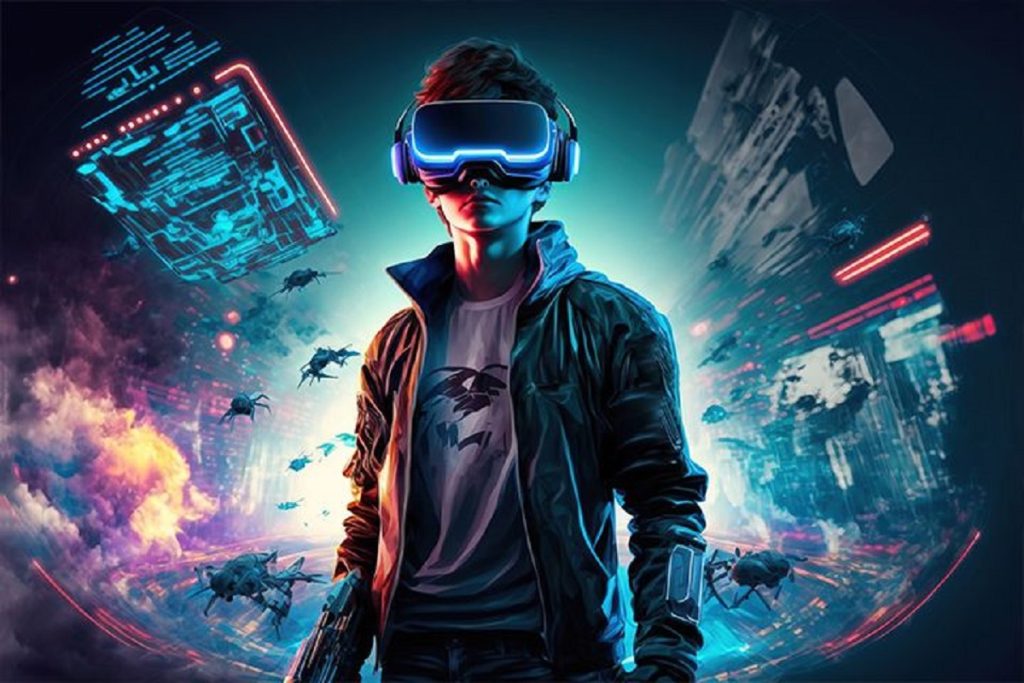
Virtual Reality (VR) has already begun to transform the gaming industry, providing players with a experiences that were once only imaginable in science fiction. As we move further into 2024, VR is on the brink of an exciting evolution. With advancements in technology, hardware, and content development, the future of VR gaming looks incredibly promising. Let’s take a closer look at what to expect in the world of virtual reality gaming in the years to come.
1. More advance and Realistic Experiences
As VR technology advances, one of the most significant improvements will be the level of excitement. Today’s VR systems are already impressive, but future VR headsets will offer even more lifelike experiences, with sharper visuals, more accurate tracking, and real-world-like interactions. New developments in eye-tracking, foveated rendering, and higher resolution displays will reduce motion sickness and increase realism, providing a more seamless experience. Expect virtual worlds that feel as though you’re truly stepping into them, blurring the lines between the game and reality.
2. Full Body Tracking and Haptic Feedback
One of the key elements that will set future VR gaming apart is full-body tracking. While current systems rely mostly on hand and head tracking, next-gen VR platforms are expected to incorporate motion capture technology for your entire body, allowing for more natural movements and interactions within virtual worlds. Players will be able to walk, jump, crouch, and even fight as their in-game avatars, offering an unprecedented level.
Moreover, advancements in haptic feedback technology will make VR even more tactile. Players will be able to feel the sensations of virtual objects, from the gentle touch of an in-game environment to the force of virtual impacts or recoil. This could include wearable gloves, vests, or suits that provide sensations like wind, heat, or even the feeling of objects in motion. Gamers will truly be able to “feel” the game in a way that was never possible before.
3. More Accessible and Affordable VR Headsets
Currently, high-quality VR headsets come at a hefty price, limiting access to enthusiasts and hardcore gamers. However, as technology becomes more widespread, we can expect to see cheaper, more accessible VR options for a broader range of users. Companies like Meta (formerly Oculus) and Sony are already pushing the envelope with more affordable, user-friendly headsets like the Meta Quest 3 and PlayStation VR2, and it’s only a matter of time before high-end VR gear becomes the norm for everyday gamers.
The future of VR will likely see headsets that are both lighter and more comfortable, with enhanced features like wireless connectivity, reduced cables, and extended battery life. These improvements will make it easier for gamers to engage with VR content for extended periods without discomfort or limitations.
4. Social VR and Multiplayer Worlds
The future of VR gaming isn’t just about solitary experiences; it’s about bringing people together in virtual worlds. Social VR platforms are becoming increasingly popular, and in 2024 and beyond, expect these environments to be more engaging and expansive. Companies are already developing virtual worlds where players can not only interact with others but create, socialize, and even attend events in real-time.
Platforms like Horizon Worlds by Meta and VRChat allow for virtual gatherings, but soon we may see even larger-scale social experiences, like virtual concerts, interactive movie nights, or digital vacations. The combination of virtual environments and real-time communication will make VR a more dynamic and social experience, transforming the way we connect with others in the gaming world.
5. AI-Driven Virtual Worlds
Artificial Intelligence (AI) will play a huge role in the future of VR gaming. As AI continues to evolve, we will see more dynamic, adaptive virtual environments that react to your actions in real-time. NPCs (non-playable characters) will become more intelligent, able to react to your decisions and adapt their behavior based on your actions. Expect games that feel truly alive, where the world evolves around you, creating a more organic and unpredictable experience.
Additionally, AI-driven procedural generation could allow for infinite possibilities in VR worlds. Imagine exploring an ever-changing universe where no two playthroughs are the same, and the virtual environments dynamically evolve based on your actions and choices.
6. Cross-Platform Integration and AR/VR Blending
The line between Augmented Reality (AR) and Virtual Reality (VR) is beginning to blur. In the near future, we can expect more integration between the two, creating mixed-reality experiences that combine the real world with virtual elements. VR games could be played alongside AR, where virtual objects interact with your real-world environment, providing an extra layer.
Imagine playing a VR game where your living room transforms into a battlefield, with AR features allowing you to interact with physical objects or your friends’ avatars as if they were really there. This merging of AR and VR will create a more fluid and expansive gaming experience, offering endless possibilities for innovation in gameplay and interaction.
7. Cloud Gaming and VR Integration
Cloud gaming has gained traction in recent years, allowing gamers to stream high-quality games without needing expensive hardware. As cloud technology improves, we’ll likely see more VR games offered through cloud platforms, allowing for instant access to a wide variety of VR titles without the need for powerful local hardware.
This could also mean cross-platform play across consoles, PCs, and VR systems, where you can seamlessly switch between VR and traditional gaming modes. Cloud-based VR platforms will allow players to enter new virtual worlds without the need for heavy-duty VR rigs, making the technology more accessible to a broader audience.
8. Virtual Reality in Esports
Esports is already a massive industry, and VR is poised to revolutionize competitive gaming. In the coming years, we could see VR esports tournaments, where players compete in fully virtual environments. From VR racing leagues to FPS and virtual sports, competitive VR gaming will bring a new level of excitement and intensity to esports.
These tournaments will likely feature spectator modes, allowing audiences to watch players compete in VR as if they were inside the game themselves. The future of esports will include new experiences for both players and fans alike, making VR an essential component of the competitive gaming landscape.
